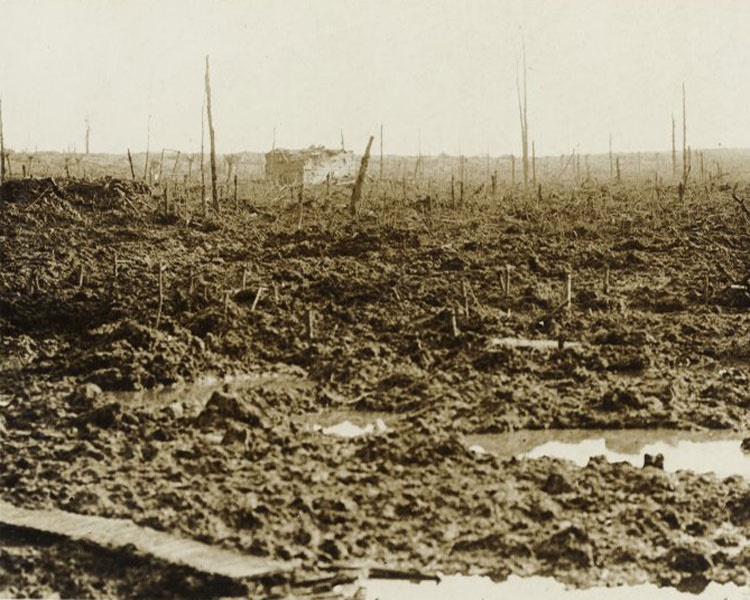
Original caption: 'Scarcely anything was left at Remus Wood, except mud and shattered tree stumps, after the battle for Broodseinde Ridge, in the Ypres Section, in Belgium, on October 4th, 1917. The Hun pill-box in the central background, alongside a well, withstood the shells. To the left of the photograph (which was taken the day following) is a sunken hedge full of German dead; whilst the duckboard track shown in the bottom left-hand corner, leads to the crater on Broodseinde Ridge.'
In an article written in 1992, Jock Phillips describes conditions around Passchendaele in October 1917:
[T]he whole area was a natural bogland, reclaimed for farming by a complex system of dykes. The war had destroyed the dykes. This was warfare in a massive, putrid swamp.
The Germans had decided that in such terrain the best option was to build up rather than dig down. Trenches simply became efficient drains, which lowered soldiers' morale and rotted their feet. So the Germans built reinforced concrete pillboxes with walls 90cm thick. These provided dry, sheltered conditions for the soldiers; they were largely safe from anything but direct artillery fire; and they offered small openings through which machine-guns could ward off possible attacks. The British meanwhile continued to dig.

Community contributions